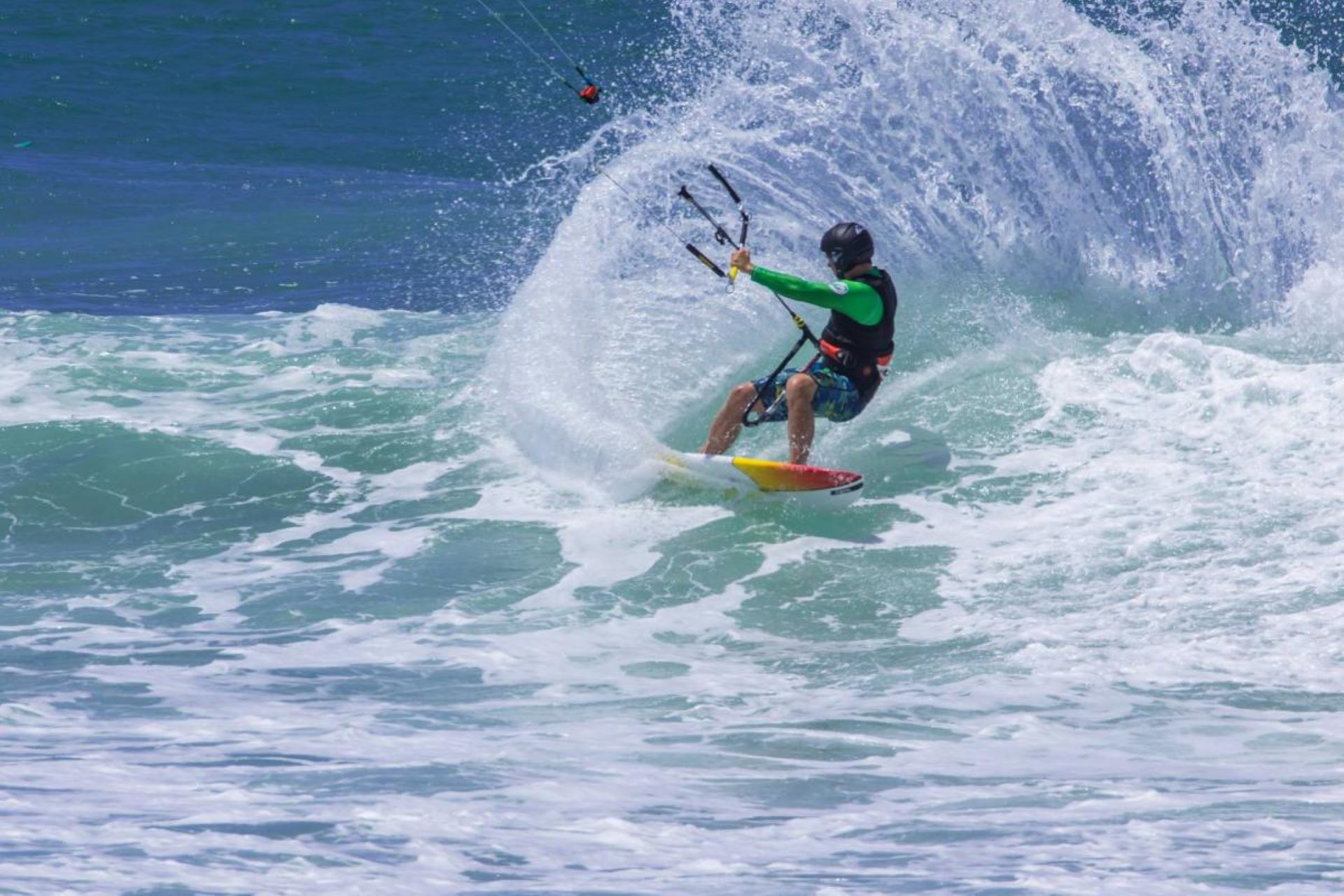Why should your kite leash be attached to the front part of the harness?

This is one of the main safety improvements from the last years. IKO has set this new standard for both students and Instructors. The kite leash must always be connected in the front part of the pilot’s harness. However most of the kiters, Instructors and students still have it connected on the harness handle with no special reason, just because ‘everybody does it this way’. There is a huge difference in terms of safety, whilst in the front, the quick release of the kite leash will always be easily accessible for the pilot; when connected to the back, in a serious situation (kite still looping), the pilot cannot access it and is in danger. Many accidents have happened this way, do not let it happen to you. If you do not unhook it is strongly recommended to use a short leash.
Get ready to perform a strapless water-start!

Are you tired of riding only on your twin tip, and want to change a bit? It could be a great idea to start riding a directional board. For first attempts it is advised (but not mandatory) to do it with straps on the board, at least one (the front) to make it easier. But if you decide to start directly without them, it is actually pretty easy. The board is flattened in front of you (whilst with a strap or 2 it will already be inclined toward you), with the kite at 11 or 1 o’clock, put your heels over the board where you would naturally put your feet to ride (if you are not sure, watch for foot-strap emplacements if any), make very little kite movements, so you will start to drag downwind, this will allow you to put pressure on the board and put it in the position as if you would have foot-straps. Once there, do what you already know about water-start, the story is the same!
Getting ready for downwinders

Downwinders are fun activities to do but could also be dangerous if not done properly. First of all, IKO only recommends to do it within an Affiliated Center organization, with people trained for it. Always keep in mind that, as you constantly move, the coast will change and unknown dangers may appear. It is always best to do it with local people, with a boat support, 2 phones in waterproof bags, one leader (the rider, in front you, gives the rhythm and ensures that the last rider is close enough) and another rider who closes the downwinder and ensures that everyone stays in front of him. In case of a problem he will communicate with the leader and stop the downwinder. It is advised to have a bag with some basic tools for repairs, screwdrivers, screws, a bottle of water, etc.
Why learning to ride strapless

Many people get stuck in the progression in twin tip, because they constantly try the same things and tend to lose motivation to learn. One of the biggest reasons to learn riding strapless is to diversify your practice and get your motivation back! Indeed in many places with flat water you will enjoy your twin tip, but in many others you will find yourself in some wavy spots where being able to ride strapless will be much more enjoyable! Diversify your practice so you will never get bored of kiteboarding! You can also start to do some freestyle with your strapless on your preferred flat water spots… By switching support, possibilities become infinite!
